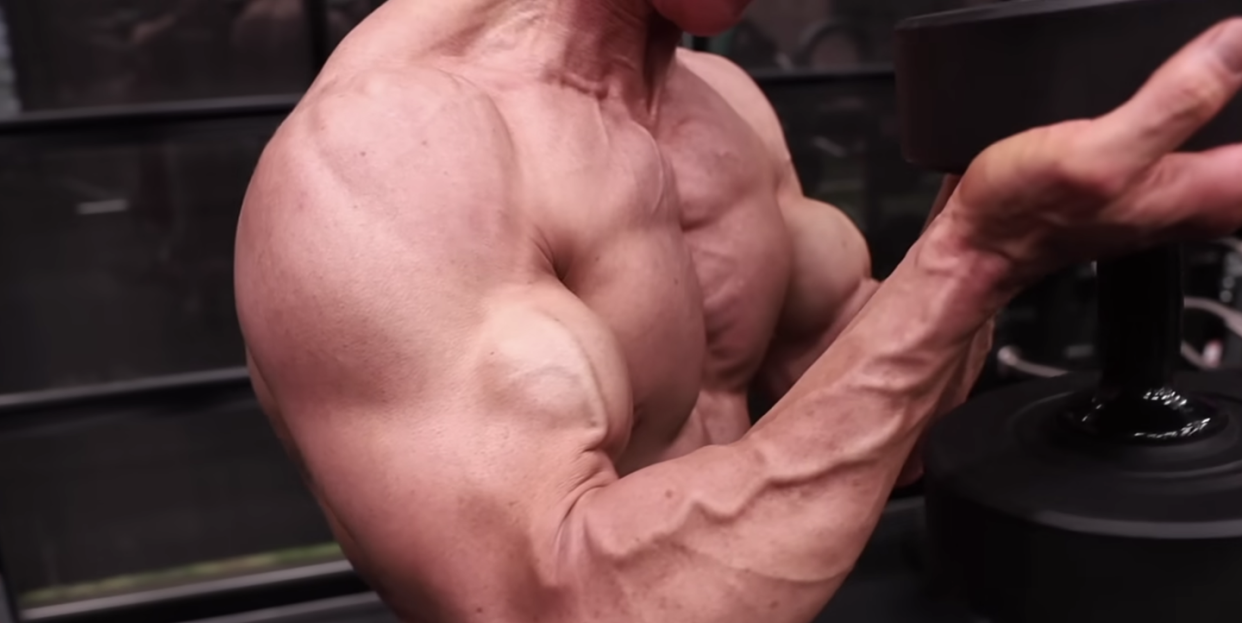A Strength Coach Explains How to Build Bigger Biceps With Waiter Curls

Strength coach and Athlean-X founder Jeff Cavaliere C.S.C.S. shares training advice each week on YouTube, breaking down the muscle-building benefits of specific exercises and demonstrating the safest, most effective form. If you've been following his content for a while, then you'll know that he is a huge advocate of one dumbbell curl variation in particular when it comes to working the biceps—the waiter curl—and in a new video, he busts some of the misconceptions surrounding this move.
One complaint that occasionally gets levied against the waiter curl is that it involves no supination, which is technically incorrect. As Cavaliere points out, there can be supination depending on how and where you grab the dumbbell.
"You want to make sure you're getting your hands underneath the flat end of the dumbbell, rather than grabbing it from the sides," he says. "If you do it properly, your forearms will be supinated, but you also have the opportunity to do some dynamic supination as well as you lift the dumbbell up." This can be achieved, he continues, by focusing the lift on the inner side of your upward-facing palms.
He goes on to explain that the narrow grip of the waiter curl helps you better target the long head of the bicep. Additionally, using a lesser weight in this exercise compared to other lifts where there's more opportunity to load up the movement can actually be a good thing.
"When you're trying to create muscle growth, the weight on the bar is just one factor in creating overload," he says. "Tension is the language that your muscles speak, and becoming fluent in your ability to increase the ways you can introduce tension is going to be the biggest thing you can do for yourself. Your muscles don't know what the number is on the side of the dumbbell or barbell, they just know what it feels like when you lift it."
"The long head of the biceps is notoriously weaker anyway," he adds. "About 15 to 20 percent when compared to the short head. So it's probably an indicator you want to work more on it anyway."
Cavaliere reminds viewers that for any bicep exercise to be effective, you have to have to be hitting all three major functions of the bicep, which are namely: flexion of the elbow, supination, and a little bit shoulder flexion at the upper end of the movement.
You Might Also Like

